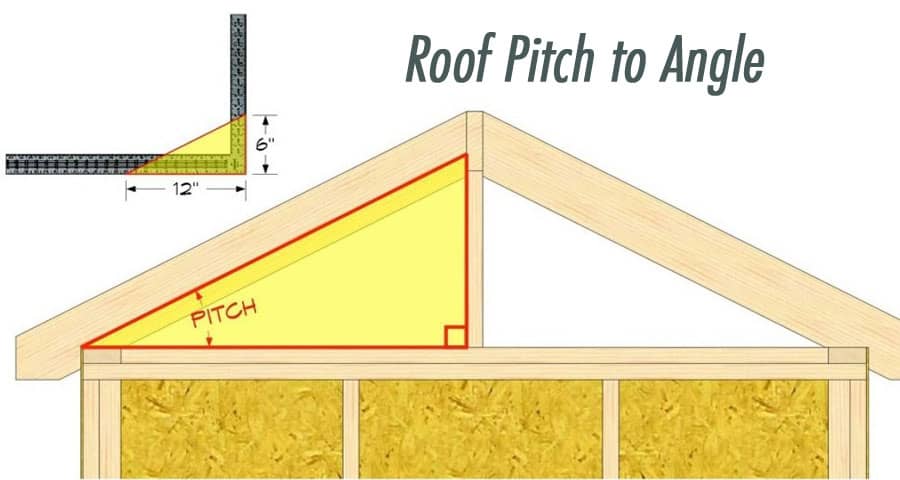Roof Pitch to Angle and its Importance in Construction

Roof pitch is a fundamental element in construction, dictating not only the aesthetics but also the functionality and longevity of a building. Understanding the relationship between roof pitch and its angle is pivotal in creating structurally sound, weather-resistant, and visually appealing roofs.
Introduction to Roof Pitch
Roof pitch refers to the slope or steepness of a roof, typically expressed as a ratio. It plays a crucial role in directing water off the roof's surface, preventing leaks and ensuring proper drainage. The importance of roof pitch in construction cannot be overstated, as it affects everything from material choice to structural integrity.
Understanding Roof Pitch Measurements
The measurement of roof pitch can vary, commonly represented as a ratio of vertical rise to horizontal run or as an angle in degrees. The accuracy of measuring roof pitch is paramount, impacting the overall design and functionality of the roof. Incorrect measurements can lead to drainage issues and structural instability.
Roof Pitch and Its Impact on Drainage
The correlation between roof pitch and effective drainage is significant. Different pitches influence water runoff differently, with steeper pitches shedding water more efficiently. Understanding this relationship aids in designing roofs that effectively manage water, reducing the risk of leaks and water damage.
Structural Integrity and Roof Pitch
The chosen roof pitch directly affects the structural stability of a building. Areas prone to heavy snowfall or rainfall require different pitches to ensure structural integrity. Engineers and architects consider the pitch while designing to optimize the building's strength and durability.
Roof Pitch and Material Selection
The pitch determines the type of roofing materials suitable for a structure. Steeper pitches are ideal for certain materials like slate or tile, while lower pitches are compatible with asphalt shingles or metal roofing. Matching the pitch with appropriate materials is essential for longevity and functionality.
Calculating Roof Pitch and Angle
Various formulas and methods are available to calculate roof pitch accurately. Converting pitch to angles helps in visualizing and understanding the roof's steepness, aiding in construction planning and implementation.
Importance of Roof Angle in Construction
The roof angle holds immense significance in both the architectural and practical aspects of construction. A well-chosen angle not only complements the building's aesthetics but also ensures efficient water runoff and facilitates optimal energy efficiency.
Factors Influencing Roof Pitch Decisions
Architectural design preferences, regional weather patterns, and building codes are critical factors that influence roof pitch decisions. These elements collectively determine the most suitable pitch for a specific structure.
The Role of Roof Pitch in Energy Efficiency
Roof pitch significantly impacts a building's energy consumption. The right pitch can maximize or minimize heat retention, impacting heating and cooling costs. Builders increasingly consider pitch as a factor in constructing environmentally friendly and energy-efficient buildings.
Safety and Maintenance Concerns
Different pitches present unique safety challenges during construction and maintenance. Steeper pitches require more safety precautions, while lower pitches might necessitate more frequent maintenance due to debris accumulation.
Roof Pitch in Residential vs. Commercial Construction
Residential and commercial constructions often have differing requirements concerning roof pitch. While residential buildings might focus more on aesthetics, commercial structures prioritize functionality and long-term durability.
Adapting Roof Pitch for Specialized Structures
Specialized structures like modern architectural designs or unique buildings often require innovative approaches to roof pitch. Adaptations are necessary to align with the building's design while ensuring functionality and stability.
Roof Pitch Trends and Future Developments
Current trends indicate a preference for certain pitch styles in construction. With advancements in construction materials and technology, future developments might bring about more efficient ways of managing roof pitches.
Conclusion
Roof pitch stands as a critical element in construction, influencing design, functionality, and durability. It's an amalgamation of aesthetic choices, structural necessities, and environmental considerations. Understanding the significance of roof pitch is pivotal in constructing resilient and efficient buildings.
FAQs
How does roof pitch affect water drainage?
Roof pitch determines how quickly water runs off the roof's surface. Steeper pitches shed water faster, reducing the risk of leaks and water damage.
Can I change the pitch of an existing roof?
Altering the pitch of an existing roof is a complex task and may not always be feasible without significant structural modifications.
What pitch is suitable for snowy regions?
Snow-prone areas often require steeper pitches to prevent snow buildup and potential structural issues.
Does roof pitch affect energy efficiency?
Yes, roof pitch impacts energy efficiency by influencing heat retention and ventilation.
Are there restrictions on roof pitch in building codes?
Some building codes stipulate minimum or maximum pitch requirements based on safety and structural considerations.
